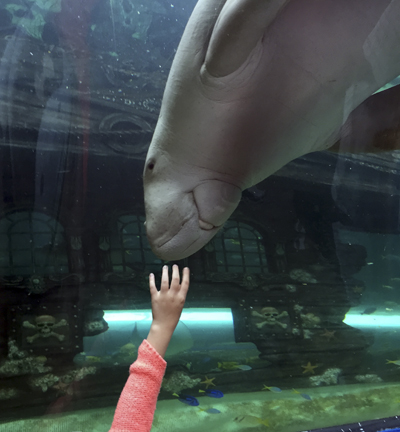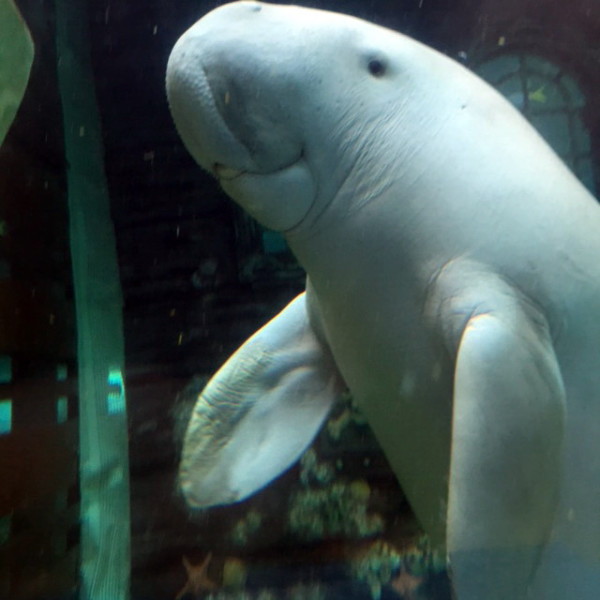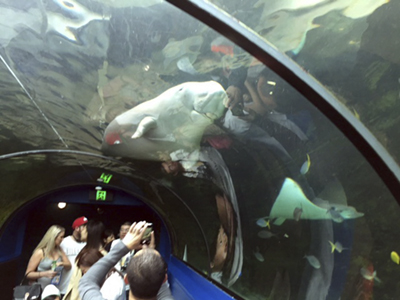Published in the Ocean Watch column, Honolulu Star-Advertiser © Susan Scott
October 13, 2014
Signal Island, New Caledonia » As Craig and I sit on Honu in this marine preserve teeming with fish, snails and sea snakes, I only have eyes for dugongs.
That’s partly because I had glimpses of two dugongs while anchored near here last spring, so I know they’re in the vicinity. I’m also freshly enamored with the South Pacific’s sea cows because I recently met two at the Sea Life Sydney Aquarium.
 An excited child reaches toward Wuru, a dugong.
An excited child reaches toward Wuru, a dugong.
©2014 Susan Scott
It happened when our immigration documents got mixed up and we had to spend an unexpected day in Sydney. As we arranged for an airport hotel, an ad caught my eye: “VISIT DUGONG ISLAND.”
That’s all it took. We dropped our luggage and boarded the train to the aquarium in Sydney’s Darling Harbor. There, visitors walk through clear tubes while tropical fish swim above, below and around them. The fish were mesmerizing, but dugongs Pig and Wuru, rescued separately along the Queensland coast, stole my heart.

In 1998, Pig, a male, was found as a week-old orphan who would have died without human help. After being hand-raised for three years, Pig was deemed healthy and released him back to the ocean. Eight months later people found poor Pig emaciated and wounded by other male dugongs. His second rescue was for life.
Because Sydney’s water is too cold for these tropical mammals, Pig lives with other warm-water creatures in an enormous heated tank the facility calls its Oceanarium.
Wuru’s story is similar. In 2005, at a month old, she too lost her mother. Human helpers nursed Wuru to adulthood in the Oceanarium, where she and Pig are now stars, loved by staff and visitors alike. Judging by the animals’ curious and playful behavior toward people, it appears the feeling is mutual.

Dugongs eat only sea grass in the wild, and in their aquarium home they eat only romaine, the nutritional equivalent of sea grass. Sea grass and lettuce are so low in calories that the animals eat 12 hours a day.
Four workers do nothing else but put romaine leaves in special trays and lower them to the Oceanarium floor every 10 to 15 minutes. Together, the two dugongs eat 176 to 265 pounds of lettuce per day, coming up for breaths of air every 3 to 12 minutes.
I watched the friendly sea cows eat and play (Pig prefers a soft, orange traffic cone; Wuru has a boogie board she likes to push around) for 30 minutes, feeling enormously privileged to see dugongs up close for as long as I liked.
Now, as we wait on our sailboat for a good weather window to shove off for Australia, I have dugongs on my mind.
I’m happy that Pig and Wuru’s rescues ended well and also that I goofed up our New Caledonia paperwork.
It’s the best flight I ever missed.
